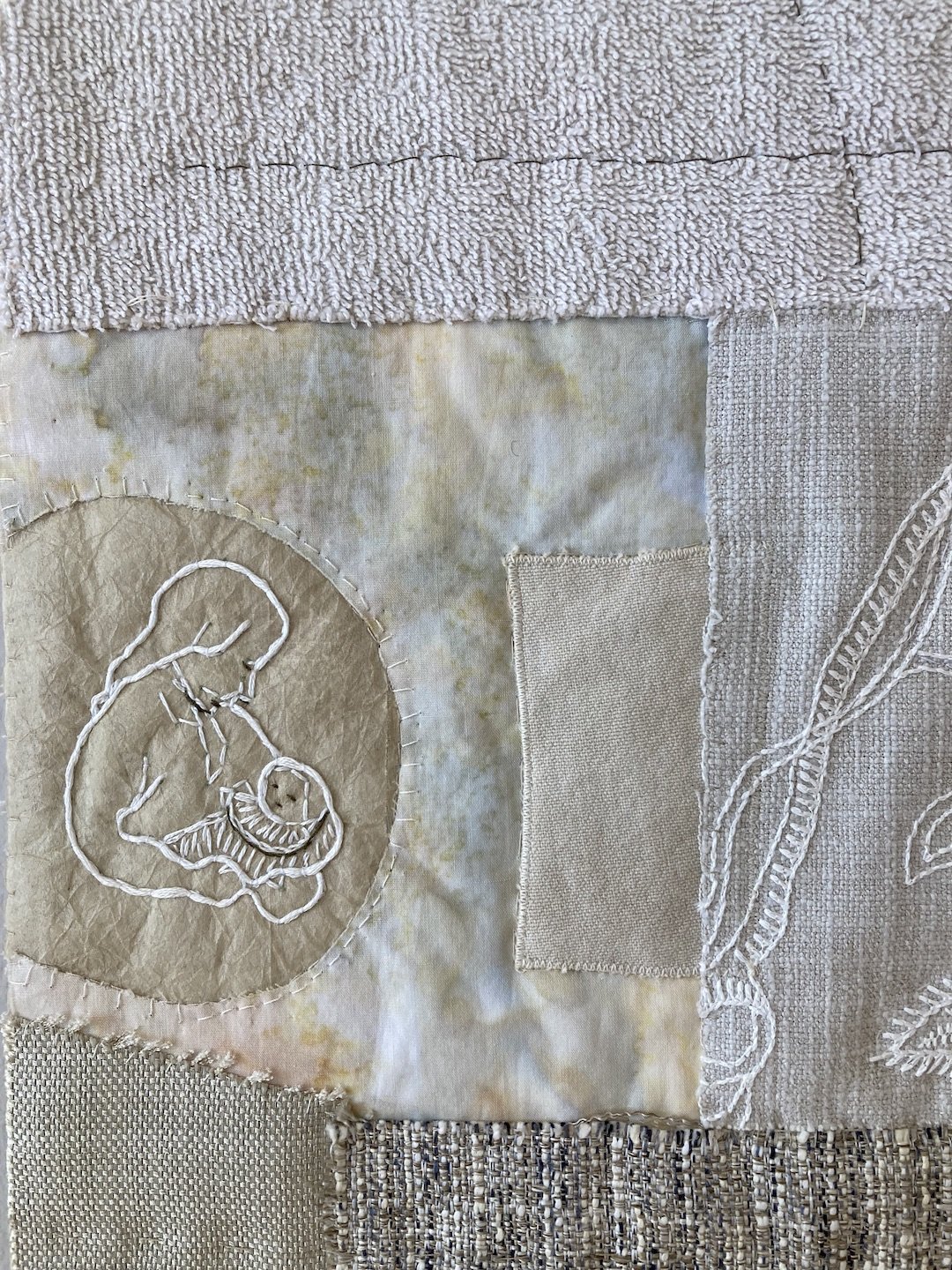Satisfying Work
What makes you feel whole and complete? What activities make for a ‘good day’? Traveling and seeing the sights might be your good day, or possibly going to the gym for a vigorous workout. Or laughing and sharing with close friends? I approve of these activities. But how about satisfying work? My best days are the ones that are productive and creative, when I have made progress on a project. I have worked, and I look forward to doing more work tomorrow.
Satisfying work is lovely! Ideally there are jobs that you enjoy doing in the optimal amount of time and that leave you with a sense of accomplishment. The work makes you feel good. In this contemporary art quilt, I wanted to show some contrasting kinds of satisfying work. Using a tractor, for instance, if you are a farmer. These reference photos really helped me do that.
Before I created the pattern for this piece, I thought about what I wanted to say. I made a list of opposites: smooth/rough, happenstance/planned, abstract/defined, finished/unfinished, precise/improvised, masculine/feminine.
I decidedd to use smooth fabrics on the tractors and rough fabrics on the surrounding background areas. I planned to use many interesting elements (including hand embroidery and tea bags) to communicate my varied, messy, intricate, organic, rich ideas about the nature of work.
Next was planning the pattern. I like a strong composition, so I arranged the parts with that in mind and included a rough idea of light and medium values in the background areas. I sketched the pattern on brown paper, increasing the size by about 200 %.
I decided to begin building the artwork by fusing all the tractors to a ground fabric of muslin. I made a tracing to facilitate exact placement of the parts. My interpretation was both simple and slightly abstract. Below are two photos showing the first steps of the fusing. The third photo shows the fusing complete on the tractors and on the outlined areas where I would next be placing highly textured fabrics to be sewn by hand.
I outlined the upper right and lower right corners with medium value strips of fabric. The other areas are outlined with pale values. I used a little bit of orange in the upper right corner to carry the eye up from the larger tractor in the lower left corner.
My next step was to do raw-edge machine applique on the tractors. It would be more difficult to do this step after the surrounding background was added, so I did it before!
I built the abstract background areas using thick textured fabrics and basting them down with large stitches. I used upholstery samples, crocheted doilies, and tea bags. The slivers of fabric of the ouytlined areas add an element of interest to the composition. I turned some of the fabrics over to show their pale undersides.
Below are two photos showing how the piece looks from the back side. This surprising and delightful back-side view can only be appreciated before it is made into a quilt and the battling and back fabric hide it away from view.
Next came many days of quilting, some done by hand and some done with my sewing machine. Some quilting is visible and some invisible. For the leaf near the largest tractor tire, I used both hand and machine quilting and both thread and embroidery floss. In one of the two circles on the edge of the quilt in the upper left corner I embroidered the figure of a woman holding a baby. It is subtle, but I like it. I used a zigzag line of stitching along the edge of each spot where a tractor image is cropped at the edge. Making finishes to the large tractor tire took several hours of satisfying work, as I added machine quilting and embroidery.
Mother and Child and tea bag detail
Texture detail
Large tractor tire detail
Top-edge zigzag stitch detail
Here is the finished quilt. For a while I thought the title would be Women’s Work. But that seemed to put too much focus on women and not enough on work. So I am calling it Doing.
Doing, 34 X 45 inches
I finish today’s blog with an easy recipe for slaw with shrimp: I use small cooked frozen shrimp. (You may have access to fresh shrimp) Thaw shrimp and pat dry on towels. Put shrimp in a bowl with lemon juice to cover. Set aside for 30 minutes. In a larger bowl place chopped green cabbage, celery, and red bell pepper.(Optionally you may also use tomatoes.) Add olive oil, salt, and dill. Toss together. Add shrimp and lemon juice. (Some of my recipes give quantities and others do not. The cook decides.) Enjoy.
















